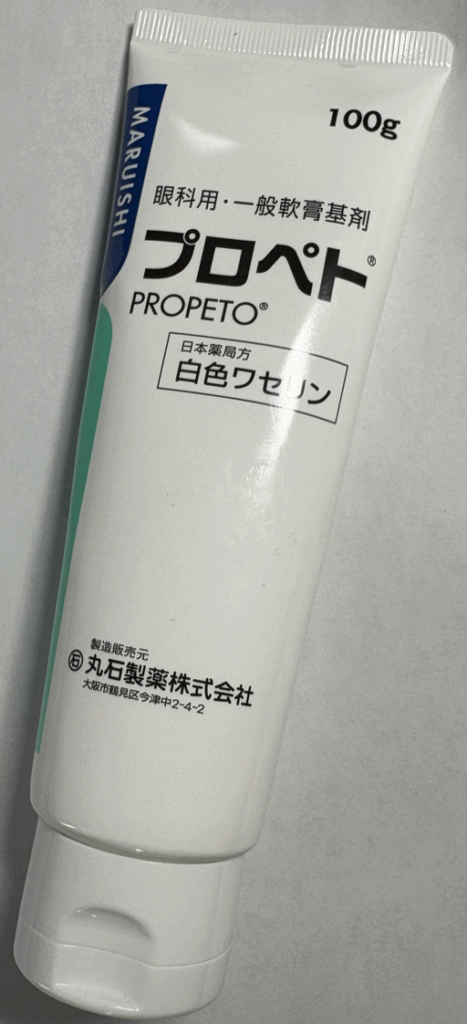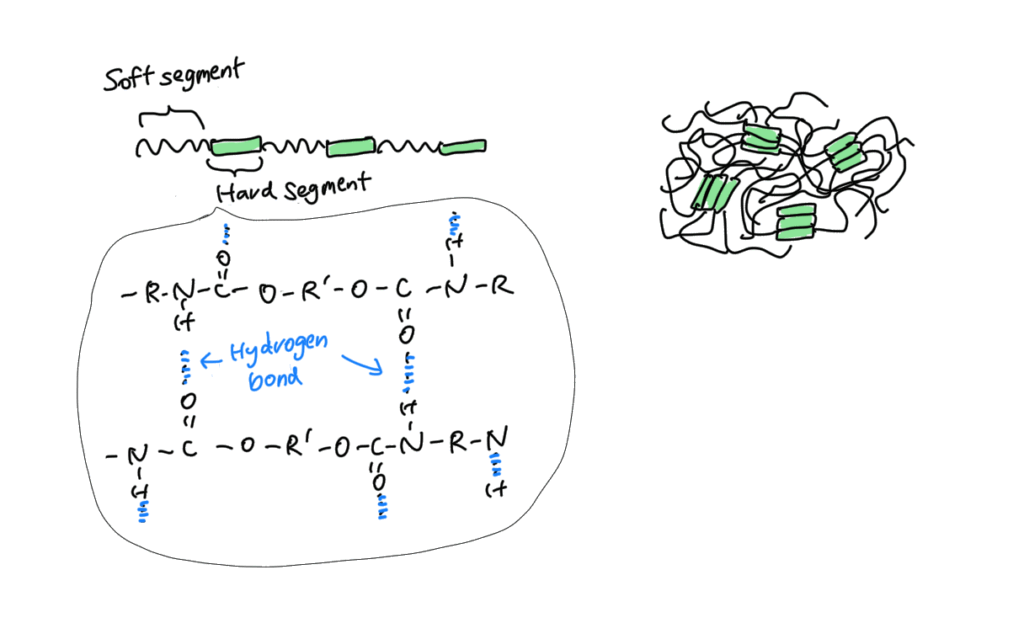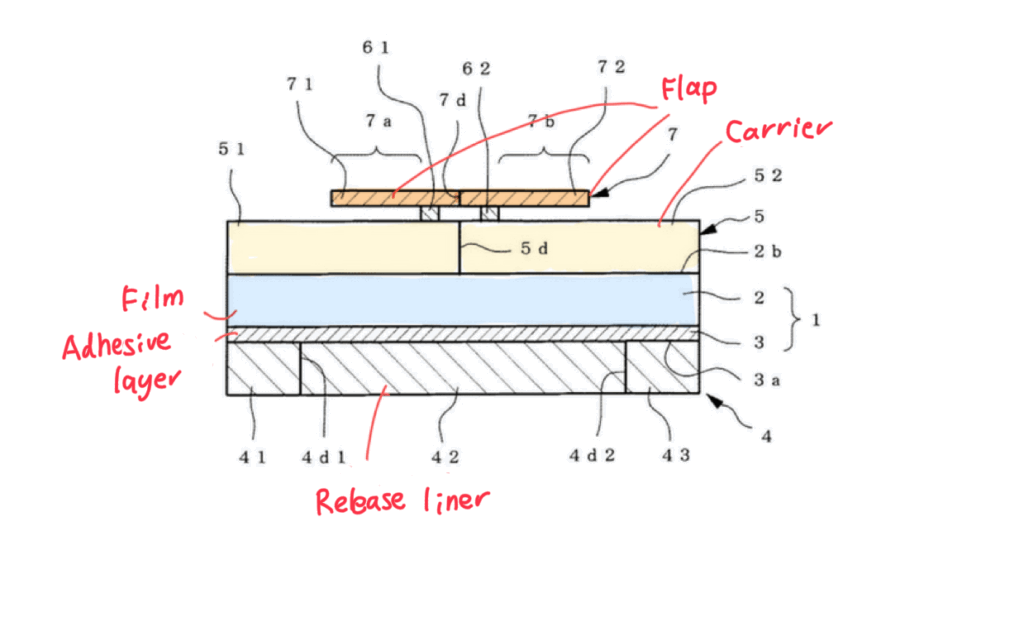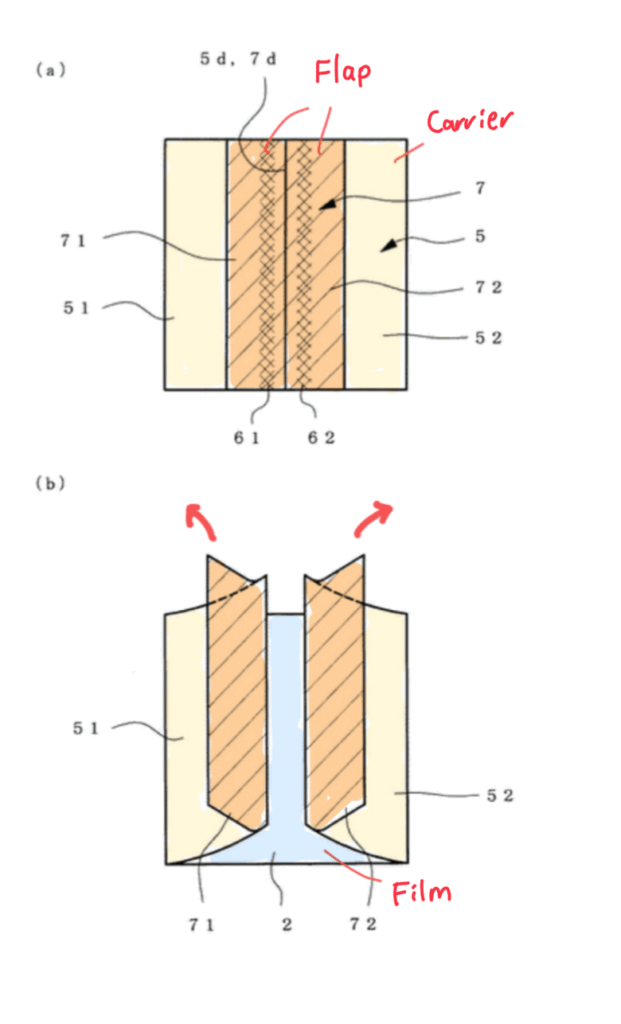When I worked in a hospital, skin care mainly meant treating pressure ulcers or wounds.
In long-term care facilities and home care settings, however, the focus is on preventing everyday skin problems.
Two items I often use in my current practice are Vaseline and film dressings.
Although Vaseline is an ointment and film dressings are a type of medical tape, both serve the role of protecting the skin.
This article introduces their characteristics, how they are used, and some related patented technologies.
Note: This article is based on the author’s personal views and independent research.
It does not guarantee the accuracy or completeness of the information.
Please use the content at your own judgment and responsibility.
Vaseline
What is Vaseline
Vaseline is a commonly available ointment sold at drugstores.

It is a translucent, semi-solid substance with a slightly greasy texture.
Chemically, it is composed of linear saturated hydrocarbons derived from petroleum refining, consisting only of carbon and hydrogen.
Structure: CH₃–(CH₂)n–CH₃ (n = 16–20)
This simple structure contributes to its chemical stability.
Why It Is Stable
Hydrophobicity
Vaseline is a nonpolar substance made only of carbon and hydrogen, and does not mix with polar substances such as water.
When applied to the skin, it can form a barrier that reduces water evaporation, helping to protect the skin from dryness and external irritation.
Single Bonds
Vaseline is a saturated hydrocarbon with only single covalent bonds (σ-bonds) between carbon and hydrogen atoms.
Unsaturated hydrocarbons contain double or triple bonds (π-bonds), where electrons are more concentrated and prone to oxidation, while saturated hydrocarbons like Vaseline have less electron imbalance, lower reactivity, and higher chemical stability.
Types of Vaseline
Vaseline is classified by its degree of refinement:
●Yellow Vaseline
●White Vaseline
●Propeto (highly refined)
Propeto is a Class III OTC drug in Japan and is commonly used even on sensitive areas such as around the eyes because of its high level of refinement.
However, some sources raise concerns about potential health risks, so it is best to check the product’s package insert and consult a doctor or pharmacist if unsure.
How It Is Used in Care Settings
Because Vaseline contains no active pharmaceutical ingredients, it is mainly used for prevention rather than treatment.
Common examples include:
- Protecting the skin from irritation caused by excretions
- Covering areas of mild redness or friction
If the skin is very dry and flaky, moisturizing the stratum corneum first and then applying a thin layer of Vaseline can be effective.
However, applying too much may cause the skin to become overly moist and more fragile, so care is needed.
Vaseline is also widely used as a base material for topical ointments because it is chemically stable and generally considered low in skin irritation.
Still, it is important to assess the overall condition—skin state, general health, lifestyle, and care environment—rather than using Vaseline as a go-to option for everything.
In practice, it is often valued as something that is “safe to apply just in case” and inexpensive and easy to prescribe, making it a useful tool in home and long-term care settings.
Film Dressings
What are Film Dressings
Film dressings are thin, flexible, and transparent medical tapes.
Products from brands such as Nitoms are commonly available.
They are typically used for:
- Fixing tubes or gauze to the skin
- Covering IV insertion sites while allowing observation
They are also used to help protect the skin.
The skin is constantly subjected to friction, shear, and pressure.
People who are bedridden or have limited mobility are more prone to skin problems, so protecting the skin surface in addition to cleansing and moisturizing can be useful.
Film dressings adhere closely to the skin and act like an extra layer of skin.

They are applied to areas with mild subcutaneous bleeding, redness, or where friction and shear are likely to occur to help shield the skin from further irritation.
Structure and Materials
Film dressings generally consist of:
- Film layer: the transparent layer that contacts the skin
- Adhesive layer
- Release liner / carrier: protects the film before use and helps with application
The film layer is often made from Polyurethane.

Chemical Structure and Properties of Polyurethane
Polyurethane is a polymer produced by reacting diisocyanates (–NCO groups) with diols (–OH groups), which are bivalent alcohols.
<Polyurethane>

This reaction forms urethane bonds (–NHCOO–) in the polymer backbone.
In its structure:
- R represents long-chain polyols (compounds with two or more –OH groups)
- R’ represents diisocyanates or diols
In plastics, the arrangement of molecules after cooling and solidifying affects their properties.
Regions where molecules are regularly aligned are called “crystalline”, while regions where molecules are entangled irregularly are called “amorphous.”

These structures influence properties such as rigidity and flexibility.
Polyurethane contains both crystalline and amorphous regions, which gives it a balance of hardness and flexibility.
Crystalline and Amorphous Regions

Hard segments and crystallinity
- Hard segments of polyurethane have short, linear molecular structures
- They contain many urethane bonds (–NHCOO–), which readily form hydrogen bonds
- Molecules align regularly and form crystalline structures
- Crystalline regions are tightly packed and hard to move, giving rigidity and heat resistance
Soft segments and amorphous structure
- Soft segments are made of long-chain polyols with high flexibility and low regularity
- They form amorphous structures where molecules move more freely, giving flexibility
- Transparency also comes from this amorphous structure
- Crystalline regions scatter light and appear opaque, while amorphous regions allow light to pass through and appear transparent
In amorphous regions, molecules are irregularly entangled with very small gaps between chains.
Water vapor from the skin can pass through as individual molecules, while liquid water, which is clustered, does not easily pass through.
This allows film dressings to block liquid water while still allowing water vapor to pass, which can help reduce skin maceration while maintaining waterproof properties (depending on the product design).
Patent for Easy-to-Apply Film Dressings
Publication No.: JP 2008-264170 A
Publication Date: November 6, 2008
Title of Invention: Film Dressing
Applicant: Nitto Denko Corporation
Conventional Issues
- Thin, soft films were difficult to handle and peel from the carrier
- The carrier had no tabs and was hard to peel while wearing gloves
- When applied from the edge (with no center slit), it was hard to fit around bumps and tubes, often leading to lifting
- Peeling the entire release liner at once removed all holding tabs, and the film stuck to gloves
- If the thin film wrinkled, it could not be reapplied and was wasted
Improvements in the Invention
This patent improved the carrier and release liner design, making the film easier to apply even with gloves on.

(Figure cited and annotated with minimum necessary parts from JP 2008-264170)
Carrier improvements
- Added rigidity to support the thin film
- Split the carrier in the center and placed a flap over it for easier gripping

(Figure cited and annotated with minimum necessary parts from JP 2008-264170)
- Used a flexible flap material so it conforms to the skin and device shape
- Adjusted the flap’s adhesive position to avoid sticking to the film and to peel easily
Release liner improvements
- Divided into three parts (center, left, right)
- The center can be peeled first while the sides remain as holding tabs

Closing Thoughts
Vaseline and film dressings are both used to help protect the skin in clinical practice.
Vaseline is commonly used as a relatively low-irritation base material.
Film dressings are designed to combine waterproofness and moisture vapor permeability,
and are valued for their practicality in allowing observation, fixing devices, and protecting the skin.
The patented design of film dressings may seem like a small detail, but it reflects thoughtful engineering to improve handling and reduce application errors—
a quiet yet meaningful innovation.
I hope to continue exploring and sharing technologies—both domestic and international—that support better care in real-world settings.
I write technical articles on medical and care materials, and support market entry projects by combining nursing experience with patent knowledge.
Please feel free to contact me via the blog’s form.
Disclaimer: This article is provided for informational purposes only and does not guarantee accuracy. Use of the content should be at your own judgment and responsibility.
References
- Nitto Denko Corporation. Film Dressing. JP 2008-264170 A, published Nov 6, 2008.
- Yutaka Okaniwa. Byoki ga Mieru Vol.14 Hifuka. Medic Media, 2020.
- Yoshitsune Urabe. Shinkagaku no Shin Kenkyu. Sanseido, 2021.
- Etec Co., Ltd. — https://www.etec.jsr.co.jp/
- Nitoms — https://medical.nitoms.com/general/products/waterproof-filmroll/index.html
- Nitto Denko Corporation Tape Museum — https://www.nitto.com/jp/ja/tapemuseum


